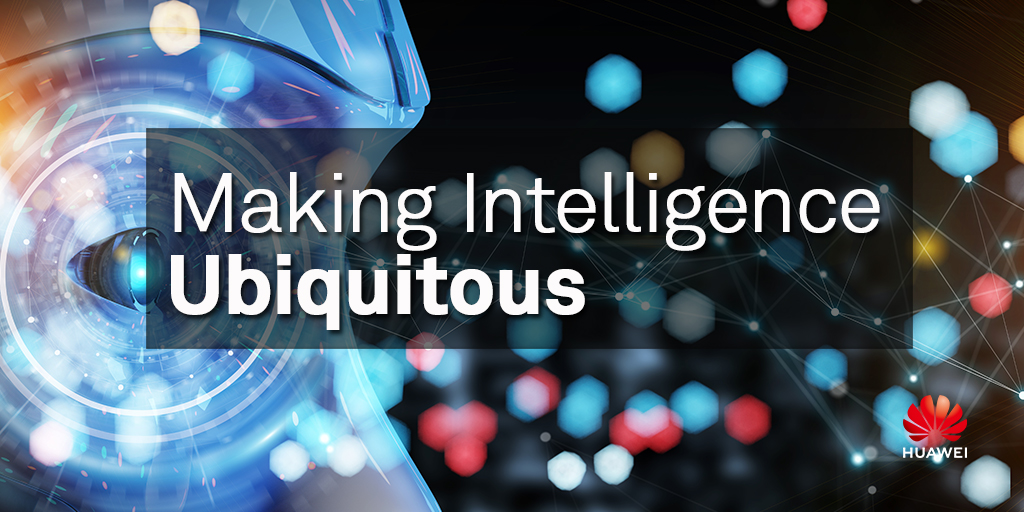
Step On Closer to the Intelligent Era with Huawei Intelligent Computing

When you talk about computing, you can never skip servers. When I first came to know servers (x86 architecture based), I was told that a server was no more than a PC, except that a server uses CPU, memory, and hard drives of higher specifications and runs more stably. At a time when server products are prone to homogenization, there seemed to be nothing wrong with this statement.
In the years that followed, as the mainstay of compute power, the trajectory of servers has changed drastically. The changes can be noticed in various aspects, reflected by the shift from general-purpose scenarios to scenario-specific applications, from general-purpose CPU computing to CPU+GPU and CPU+FPGA heterogeneous computing, from the basic out-of-band management to intelligent O&M, from a market dominated by international vendors to a market with increasing presence of Chinese vendors.
When we moved from the traditional information era to the internet age, and then onwards to the intelligence-driven era, servers have been constantly evolving along with the characteristics of the times. The scope of computing is also expanding, from servers, cloud, to the edge. At the same time, with the advent of the intelligent era, the concept of computing is becoming more and more closely related with intelligence.
From Boundless Computing to Intelligent Computing
Last July, Huawei released the Boundless Computing strategy, aiming to break through the boundaries of CPUs, servers, and data centers. Boundless Computing shatters the borders that confine traditional servers and is crucial to the reinvention of Huawei servers.
On May 31, 2018, Huawei announced its intelligent computing business initiative. Qiu Long, President of Huawei Intelligent Computing Product Line, said that intelligent computing is a continuation to the Boundless Computing strategy and is integral to the implementation of Boundless Computing.
Also in 2018, Huawei IT Product Line pitches a new slogan, aiming to herald an intelligent future with smart IT. According to Huawei, IT infrastructure is not only a pillar for supporting business, but also a driver for business value. The primary focus of enterprises on IT infrastructure should shift from effective resource utilization to support for business development, from cost effectiveness to value creation.
Therefore, in the intelligent era, IT infrastructure is no longer behind the scene. Rather than solely a pack of expenditure-consuming IT capabilities, IT infrastructure is now an impetus that catalyzes business model innovation for enterprises to quickly tap into new business opportunities.
For Huawei, there are two reasons for implementing Boundless Computing through intelligent computing.
From the technical perspective, data center construction across the world is gaining speeds, with data centers reaching the scale of several hundred thousand or even over one million servers. The management scenarios with massive quantities of servers are becoming more and more complex. Therefore, the IT infrastructure is required to evolve intelligent autonomous management and upgrade capabilities, liberating O&M personnel from the daily mechanical and repetitive work. In addition, intelligent energy consumption and fault management can better ensure service quality and continuously drive down operating expenditure (OPEX).
Also, with the emergence of AI related services, heterogeneous computing powered by various computing units such as GPU, FPGA, and ASIC is rising as a strong breed of computing to enable even faster development of the intelligent trend. Therefore, the IT infrastructure needs to break through the computing boundaries and grow technical capabilities such as heterogeneous computing, cloud enablement, and edge intelligence. The IT infrastructure should be able to provide abundant compute power on premises, in the cloud, and at the edge, fully enabling collaboration in between.
From the industry perspective, infusing industry with intelligence is becoming a key differentiator for enterprises of the traditional industries in future competition. IT infrastructure will gradually evolve into intelligent solutions to enable industry intelligence and empower enterprises to transform digitally and intelligently. Intelligent IT infrastructure will become the most powerful industry brain in the future digital world.
At the same time, with the blazing-fast development of new intelligent industries, various intelligent products such as autonomous cars, drones, robots, and voice assistants are progressively becoming a part of people’s work and life. The new production patterns, new business models, and new lifestyles will become popular in the intelligent world, forming new industries of large sizes and scales. New intelligent IT infrastructure is vital to make all these happen.
Making Intelligence Ubiquitous
Qiu Long said that Huawei hopes to make computing smarter, and enable more efficient and flexible digital transformation for traditional enterprises. Also Huawei looks to enable intelligent terminals with smarter connectivity for governments as well as for new businesses.
Therefore, Huawei has upped the intelligent computing game in the server, data center, and edge fronts to drive ubiquitous intelligence.
The post Step On Closer to the Intelligent Era with Huawei Intelligent Computing appeared first on Huawei Enterprise Blog.
Source: Huawei Enterprise Blog
—